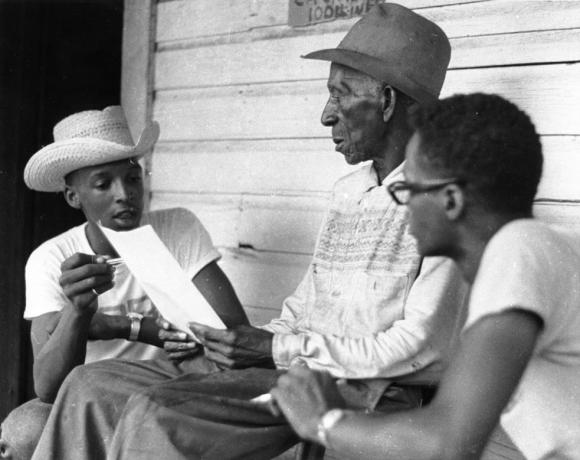PROVIDENCE, R.I. [Brown University] — Few high school students today can understand what it would have been like to participate in the civil rights movement of the 1960s; the struggle to ensure Constitutional rights and opportunities for all Americans may seem like ancient history. A new curriculum developed by the Choices for the 21st Century Education Program at Brown University’s Watson Institute for International Studies aims to brings high schoolers a little closer to that significant period in U.S. history.
Freedom Now: The Civil Rights Movement in Mississippi launched in late November and is now available to social studies teachers nationwide. The curriculum combines readings, videos, and activities to bring students a perspective on this part of history that students do not typically hear.
“The idea was to show that the foundation of the movement was years and years and years of work by ordinary people in communities,” said Andrew Blackadar, curriculum development director for the Choices Program. “Many of them were high school and college-age young people who devoted their lives and risked harm to try to fundamentally change the United States.”
The centerpiece of Freedom Now is an activity focused on helping students understand the importance of the 1964 Democratic National Convention, at which African American delegates from the Mississippi Freedom Democratic Party challenged the legitimacy of the all-white Mississippi Democratic Party.
Accompanying the readings and activities are more than 70 short videos of Brown faculty explaining different aspects of the civil rights movement’s history, and, in many cases, their own involvement in events at that time. The faculty who were interviewed are Charles E. Cobb Jr., visiting professor of Africana studies; Francoise Hamlin, assistant professor of Africana studies; Judy Richardson, visiting professor of Africana studies; Ekwueme Michael Thelwell, visiting professor of Africana studies; and Michael Vorenberg, associate professor of history. In addition, the Choices Program interviewed Georgia Congressman John Lewis, a leader in the civil rights movement, who was chairman of the Student Nonviolent Coordinating Committee from 1963 to 1966. His videos also appear as part of the curriculum.
The Choices Program regularly works with Brown faculty to enhance the curricula it develops through contributed research and draws on videos, which are available free online to supplement many of the available titles.
“I would call it the democratization of knowledge and information,” Blackadar said. “Hearing faculty speak about a certain subject is something that Brown students get exposed to, but now we’re able to reach beyond Brown to a broader audience. And I think that’s one of the reasons why we’re strong: High school teachers and administrators trust us, they know the curriculum is well-researched, they know it’s backed up by scholarship.”
Exercises included in the curriculum build a range of skills. Students analyze a variety of primary sources, sift through economic and social data, and consider the evolution of tactics of the civil rights movement and role of federal, state, and local government. All of these activities are designed to help students develop competencies required by national Common Core education standards.
Other activities prompt students to put themselves in the place of someone involved in the movement and consider what motivated them to make the decisions they made. Role-playing is a signature teaching method of many of the Choices Program’s curricula, according to Susan Graseck, the Choices Program director.
“I always like to say that we teach history through a civics lens. History didn’t just happen, it was made. And we’re making history today. So we help students to see those connections, to go back to particular turning points in history and understand what it was like to stand in that moment and to be in one way or another a decision-maker,” Graseck said. “In this way they also come to understand that they can participate; they can have a place in making history today and in the future.”
The Choices Program was created more than 20 years ago and now has more than 40 titles in its catalog on subjects ranging from The United States in Afghanistan to The Cuban Missile Crisis: Considering Its Place in Cold War History and many other historic and current international and national issues. Through its curricular resources, professional development programs, and special projects, the Choices Program reaches high school students and teachers in more than one-third of American high schools.
One of the more recent developments of the program was the addition of iBook Textbook editions of its curricula, which combine readings with videos and other digital content to create a more enhanced experience for students. Freedom Now is the 20th title the Choices Program has made available via iTunes.
Print copies of the curriculum are also available for purchase.
For more information about the Choices Program or to purchase Freedom Now or other titles, visit www.choices.edu.

